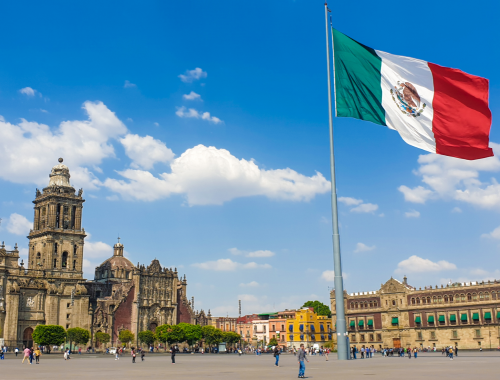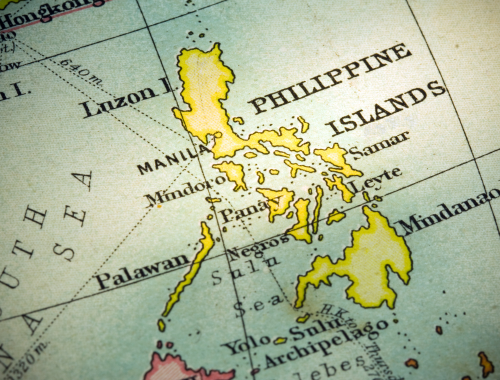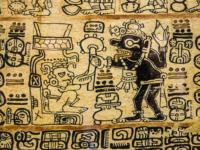
Why are there similarities between Mexico and the Philippines?
While Mexico and the Philippines are distinct countries with different cultures, histories, and geographical locations, there are some similarities that can be identified. Here are a few points of comparison:
- Colonial Influence: Both Mexico and the Philippines were colonies of Spain for an extended period. The Spanish colonization, which lasted for more than 300 years in both regions, has left a lasting impact on their cultures, languages, and traditions. This shared colonial history has influenced aspects of religion, language, and certain cultural practices.
- Religion: The predominant religion in both Mexico and the Philippines is Roman Catholicism. The Spanish colonization played a significant role in introducing and spreading Catholicism in these regions, and it continues to be a major influence on the cultural and religious practices of the people.
- Cuisine: There are some similarities in the cuisine of Mexico and the Philippines, particularly in the use of certain ingredients and flavors. Both cuisines feature a variety of dishes with rice as a staple, and there are some common elements in the use of spices and herbs.
- Festivals: Both countries celebrate traditional festivals that are rooted in their cultural and religious heritage. These festivals often involve vibrant parades, music, dance, and religious processions. The blending of indigenous traditions with Spanish-influenced customs is evident in these celebrations.
- Natural Disasters: Both Mexico and the Philippines are prone to natural disasters, including earthquakes and typhoons. The vulnerability to such events has led to shared experiences in terms of disaster response, preparedness, and recovery.

It’s important to note that while these similarities exist, the two countries also have many differences in terms of language, specific cultural practices, historical experiences, and geopolitical context. The similarities mentioned are often more apparent when comparing aspects influenced by Spanish colonization.
Below is a simplified comparison chart highlighting some similarities and differences between Mexico and the Philippines:
| Category | Mexico | Philippines |
| Geography | Located in North America, bordered by the U.S. to the north and the Pacific Ocean to the west. | Archipelago in Southeast Asia, surrounded by the Pacific Ocean. |
| Colonial History | Former Spanish colony for over 300 years. | Former Spanish colony for over 300 years. |
| Official Language | Spanish | Filipino (based on Tagalog) and English |
| Religion | Predominantly Roman Catholic due to Spanish influence. | Predominantly Roman Catholic due to Spanish influence. |
| Cuisine | Influenced by indigenous, Spanish, and Mesoamerican flavors. Tacos, enchiladas, etc. | Blends indigenous, Spanish, and Chinese influences. Adobo, sinigang, etc. |
| Festivals | Celebrates various festivals with a mix of indigenous and Spanish influences. | Vibrant festivals rooted in Catholic traditions. Sinulog, Ati-Atihan, etc. |
| Natural Disasters | Prone to earthquakes and volcanic activity. | Prone to typhoons, earthquakes, and volcanic activity. |
| Independence | Gained independence from Spain in 1821. | Gained independence from Spain in 1898. |
| Languages | Spanish and numerous indigenous languages. | Filipino (based on Tagalog) and regional languages. English widely used. |
| Economy | Diverse economy with a strong manufacturing sector. | Diverse economy with services, agriculture, and manufacturing. |
| Population | Approx. 126 million (2021). | Approx. 113 million (2021). |
Note: This is a basic overview, and both countries have rich, diverse cultures and histories that go beyond these generalizations. Individual experiences within each country can vary significantly.
Is there a historical connection between Mexico and the Philippines?
Yes, both Mexico and the Philippines were Spanish colonies for an extended period. The Spanish colonization, lasting over 300 years, has left a significant impact on their cultures, languages, and traditions, leading to some similarities.
How has Spanish colonization influenced both countries?
Spanish colonization introduced Roman Catholicism, which remains the predominant religion in both countries. It also influenced language, cuisine, architecture, and cultural practices. Shared colonial history has contributed to some similarities in their cultural heritage.
Are there similarities in religious practices between Mexico and the Philippines?
Yes, both countries are predominantly Catholic due to the influence of Spanish colonization. Similarities can be observed in religious practices, festivals, and the prominence of Catholic traditions in daily life.
Are there similarities in cuisine between Mexico and the Philippines?
Yes, there are some similarities in cuisine, including the use of rice as a staple, common spices, and certain cooking techniques. The blending of indigenous flavors with Spanish culinary influences is evident in both countries.
What other cultural aspects exhibit similarities between Mexico and the Philippines?
Cultural aspects such as traditional festivals, music, dance, and familial values show similarities influenced by Spanish colonization. Both countries celebrate vibrant festivals rooted in their cultural and religious heritage.
Are there differences despite the similarities?
Yes, while there are cultural and historical similarities, both countries have distinct languages, specific cultural practices, and unique historical experiences. Differences are also shaped by their individual geopolitical and socio-economic contexts.
It’s important to recognize that while historical ties create commonalities, both Mexico and the Philippines have evolved independently, each with its own rich and diverse cultural identity.












Leave a Reply